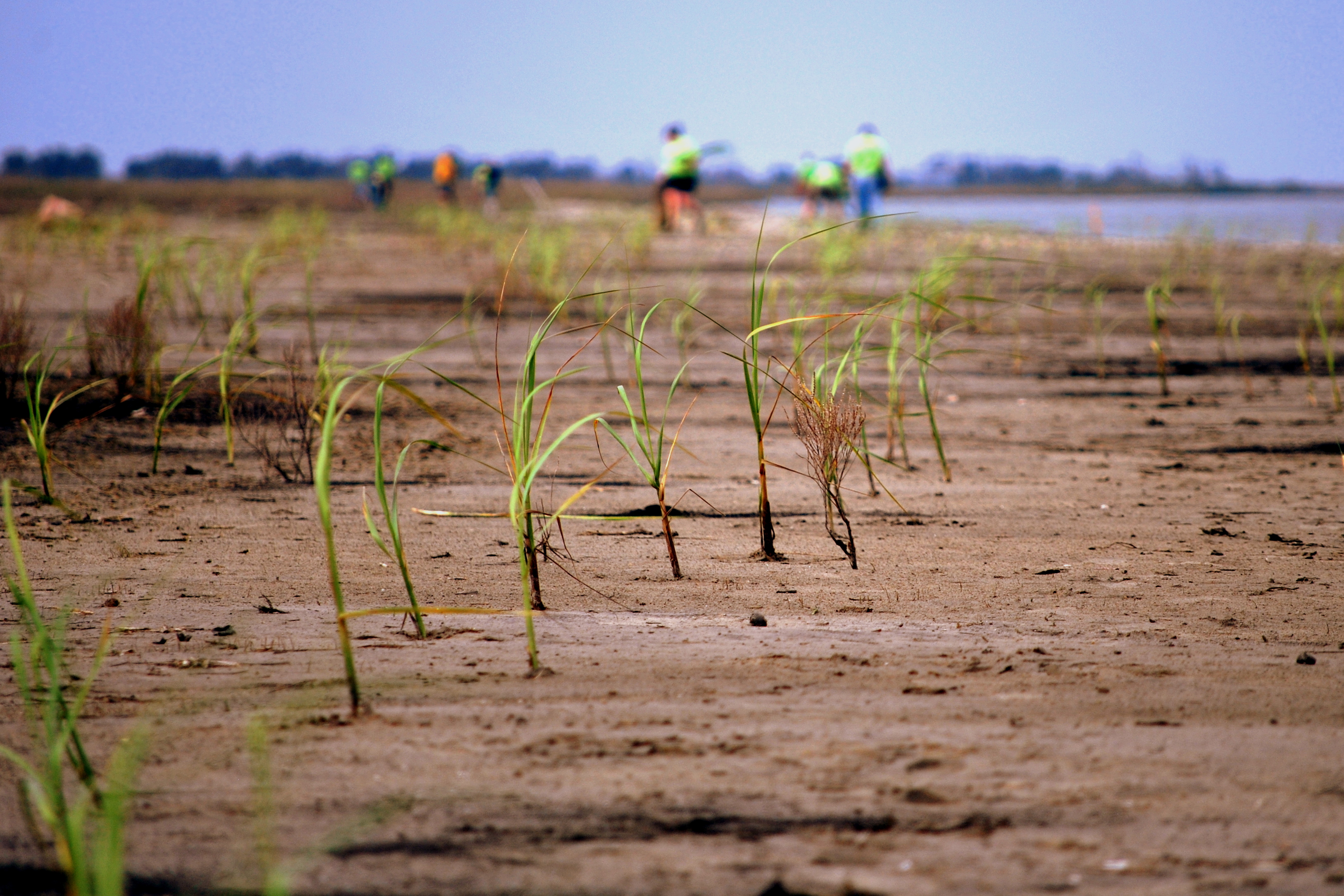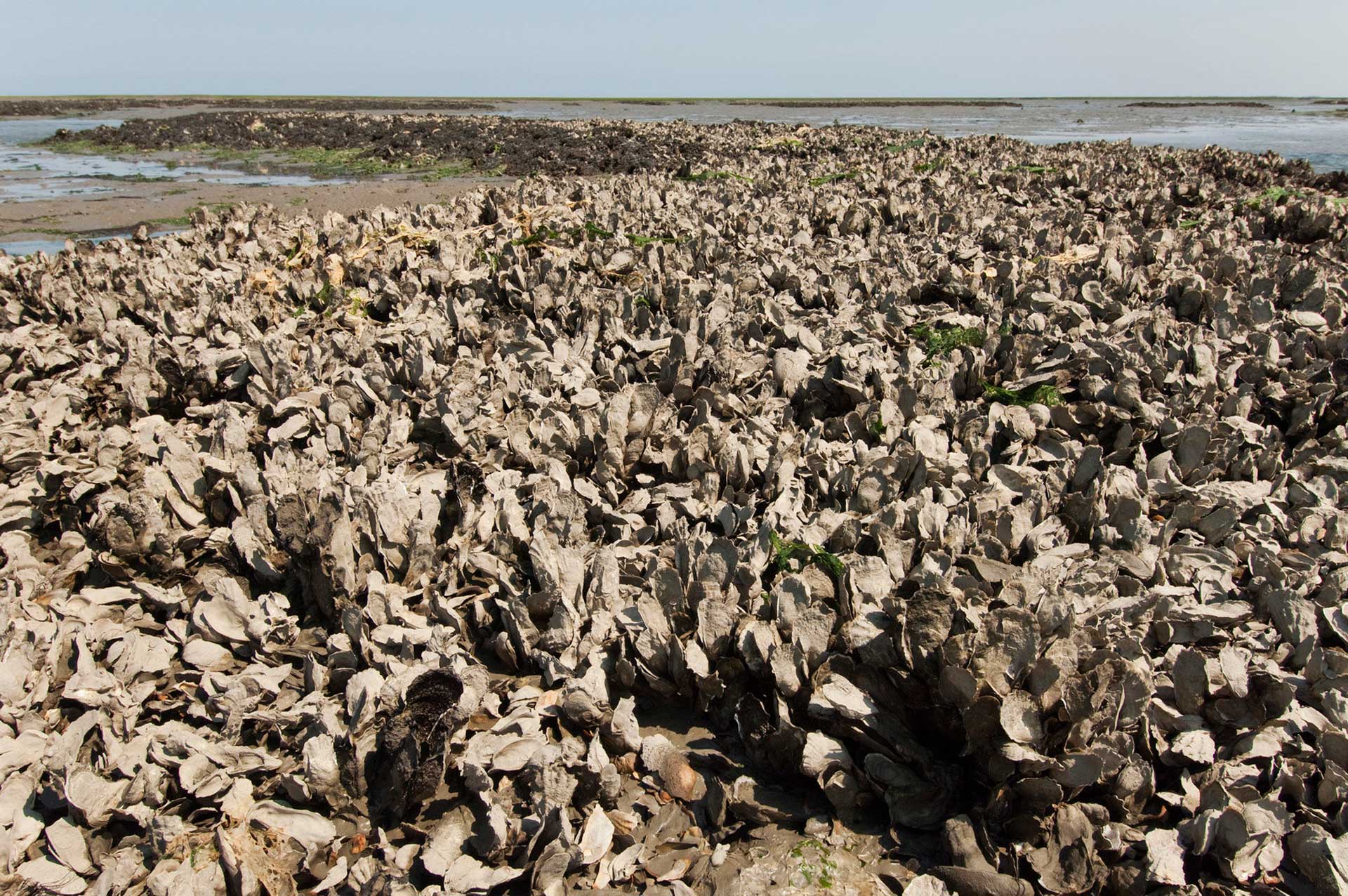Pensacola, Florida
Challenge
Pensacola’s location in the western Panhandle of Florida combined with its low, flat elevation means that intense wave action, rising water levels and storm surges associated with hurricanes and tropical storms pose significant threats to city. In addition to the threat of loss of life, storm surges can damage property and public infrastructure, force businesses to close, delay emergency responses and erode coastlines. Pensacola has dealt with these impacts since its founding.
Project Details
- Location: Pensacola, Florida
- Population: 450,000+ (Metropolitan area)
- Cost: $6 million
- Strategies: living breakwaters, living shorelines, coastal restoration
- Benefits: ecological, economic, social, public health
History
Pensacola’s first hurricane was recorded in 1559—the year Spanish colonists established the first settlement here. Since 1975, Pensacola has been directly hit by eight hurricanes and even more tropical storms. Today, the city ranks 8th on Sperling’s list of the “worst places for hurricanes” in the United States.
Solution
In 2000, the City of Pensacola began a project to re-establish lost marsh habitat along its downtown shoreline. While the primary objective of “Project Greenshores” was not to protect its residents from storms, the unintended benefits from the project included increased protection from storm-related surges and rising sea levels, making Project Greenshores an accidental example of natural infrastructure improving a community’s resiliency.
The first phase of Project Greenshores at Site 1 was the construction of a breakwater. The structure sits on the bay’s floor and extends above the surface, creating a wall that reduces the height and force of waves. The breakwaters were constructed using 14,000 tons of limestone, 6,000 tons of recycled concrete, and 40 preformed concrete blocks. Next, workers formed 35,000 cubic yards of sand into a series of five islands just offshore. Some 41,000 Spartina Alterniflora plants, a native species of common saltmarsh grass, were then planted to produce eight acres of marsh habitat. With the combination of offshore breakwaters, the site increased protection from storm surge by attenuating the waves, stabilizing sediment and reducing erosion during storms.

In 2007, Project Greenshores began construction at Site 2 that featured a similar, but smaller-scale design. Here, citizens requested the breakwaters be completely submerged underwater to improve the site’s aesthetics. The breakwaters were constructed from 25,000 cubic yards of recycled concrete donated after a runway was decommissioned at a nearby Naval air station. Three islands were then created from 16,000 cubic yards of dredge spoil that was removed from the Escombia River during a separate project. Site 2 was completed in 2008 with the planting of 30,000 plants. However, the submerged breakwaters at Site 2 proved not as effective at attenuating wave action; over time two of the marsh islands have experienced erosion and lost some of their vertical relief.
Because the project was one of the first attempts to reconstruct a living shoreline in Florida, research had yet to prove what’s known today—breakwaters are essential design elements for the reconstruction of living shorelines.
Partners and Funding
The Florida Department of Environmental Protection served as the lead agency in the project, which required almost $6 million dollars to fund, with $2,797,000 coming from cash donations and grants and $2,828,043 coming from in-kind donations and materials. Volunteers—including some 850 Boy Scouts and Girl Scouts—planted the marsh grass at both sites. In all, more than 60 organizations provided donations or funding. Grants for the project were funded by NOAA, the U.S. Fish and Wildlife Service, the U.S. EPA Gulf of Mexico Program, Florida Department of Environmental Protection, the National Fish and Wildlife Foundation, the Northwest Florida Water Management District, and many local community partners.
Involving the community in the early stages undoubtedly created a foundation for the project’s success.
Benefits
Project Greenshores is a resounding habitat restoration success and has exceeded expectations in terms of its potential benefits. Bird species are now so abundant at Project Greenshores that the Audubon Society added it as a site along the Great Florida Birding Trail, which has boosted tourism. Oysters have grown on the breakwaters, which enhances habitat for fish. Crab fishermen have benefitted from increased harvests of blue crabs, which were scarce in the bay before the project. The breakwaters have reduced wave action and turbidity, while the marsh habitat better retains nutrients before they wash into bay, which has improved water quality.
Residents along Pensacola Bay will also pay less for damages during future storms. The same year that Site 1 was completed in 2004, Pensacola took a direct hit from Hurricane Ivan, an intense Category 3 hurricane when it made landfall. The storm surge reached 15 feet and washed out most of Bayfront Parkway, a major roadway that runs parallel to the bay’s shoreline. The damage closed the majority of the road for months. The section of Bayfront Parkway directly behind Project Greenshores experienced less damage—only the eastbound lanes were closed here. Also, the shoreline at the project sites did not experience heavy erosion.
The following year Pensacola was hit by Hurricane Dennis, also a Category 3 hurricane, and the benefits of the project were again observed, as the breakwaters and marsh islands helped protect the shore from storm surge. The performance of Project Greenshores during two hurricanes proved its utilization in coastal resiliency.
Excerpts
“This project has clearly demonstrated that living shorelines have tremendous benefits not only in terms of our ecosystem, our economy, and our recreational activities, but also in mitigating the impact of tropical storms and hurricanes. Experts have found that areas with living shorelines experience less coastal erosion as a result of storm events.” – Pensacola Mayor Ashton Hayward


